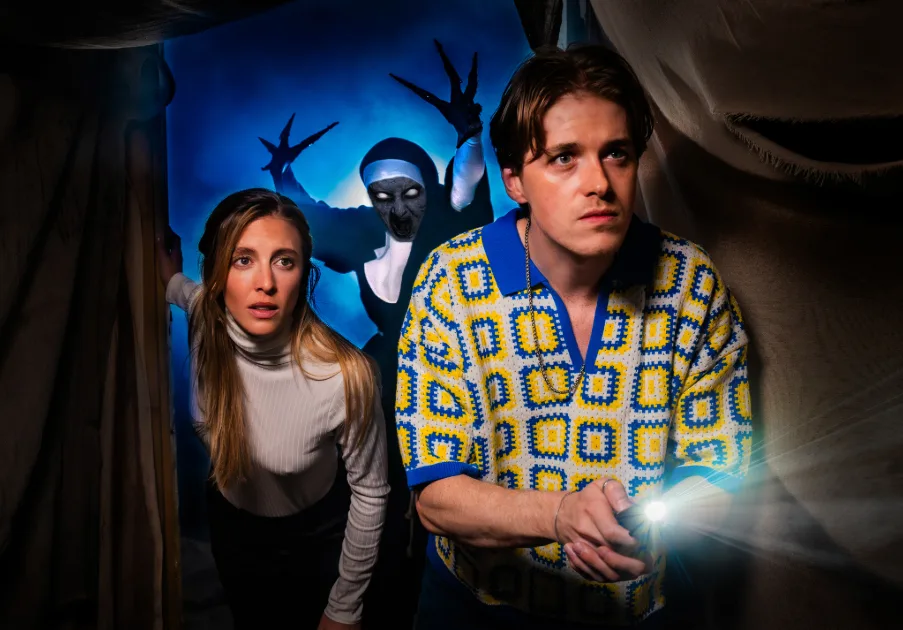Our Girl About Travel ‘girls trip’ guide to the Florida Keys
If you're thinking of booking a holiday to the Florida Keys (and we strongly recommend you do!) here's everything you need to know before you travel.
What you need to know before you go
The Florida Keys are all about the fun with a capital F – fun on the water, fun on its islands and fun in the city - pretty-as-a-picture Key West. They keys are glam, gorgeous and girly, and they boast plenty of fabulous places to stay and things to do.
Sally, Girl About Leeds, and I, Girl About Travel’s editor-in-chief, spent a week in early March exploring this narrow spit of land at the southern tip of Florida.
We squeezed in so much to our trip and here are our top tips, must sees and definite dos in our handy Girl About Travel guide to the Florida Keys.

First up, where are the Florida Keys?
We’ve been asked this A LOT. It seems like everyone’s heard of the Florida Keys, but then aren’t too sure where they are. The Florida Keys are a string of islands running south of Miami and beyond the Everglades at the southern tip of Florida. They’re so far south that Key West, the city at the end of the Keys, lays claim to the southernmost point of the USA. Here, it’s only 95 miles to Cuba – less than the 165 by road it is to Miami.
At the northern end of the Keys is Key Largo, a large island at the beginning of the Florida Keys National Marine Sanctuary with lots of beaches and some popular dive spots, while at the southern end is Key West, a vibrant, anything-goes, sub-tropical paradise.
The small city feels more Cuban than American, and is a properly inclusive mix of cultures and history that feels like a sunnier and even friendlier Brighton.
Between the two are Islamorada, a village of six islands, Marathon, a 10-mile long island, and Big Pine Key, the main island among a group of about 30 mainly uninhabited islands set among nature reserves and mangroves.
Why are the Florida Keys so special?
The Florida Keys are made up of over 800 keys – small, low-lying coral islands, formed from the remains of ancient coral reefs – and in total stretch for over 180 miles linked by 42 bridges.
On the eastern side of the archipelago is the Atlantic Ocean, on the western side the Gulf of Mexico, and protecting its eastern side from the Atlantic swell is the Florida Reef, the third largest coral reef in the world. It’s an ecological haven of sea life and is central to the appeal of the Keys, and to its economy.
You’re never far from the ocean in the Keys, and the tides and swell from the Gulf of Mexico and the Atlantic tend to cancel each other out so for the most part, the waters are calm and inviting.
The temperature in the Keys reaches an average of 32ºC in summer but a more comfortable 22-28ºC during spring. The water temperature can easily be a lovely 30ºC, thanks to the Gulf Stream running through the Straits of Florida close by, and the Keys are just north of the Tropic of Cancer, so generally have a tropical climate.
All this adds up to white sandy beaches, palm trees, sheltered bays and a fascinating ecosystem full of mangrove trees, coral reefs and huge seagrass beds. The people who live in the Florida Keys make the most of their natural habitat by spending as much time in and on the water as possible, and eating plenty of delicious fresh seafood.


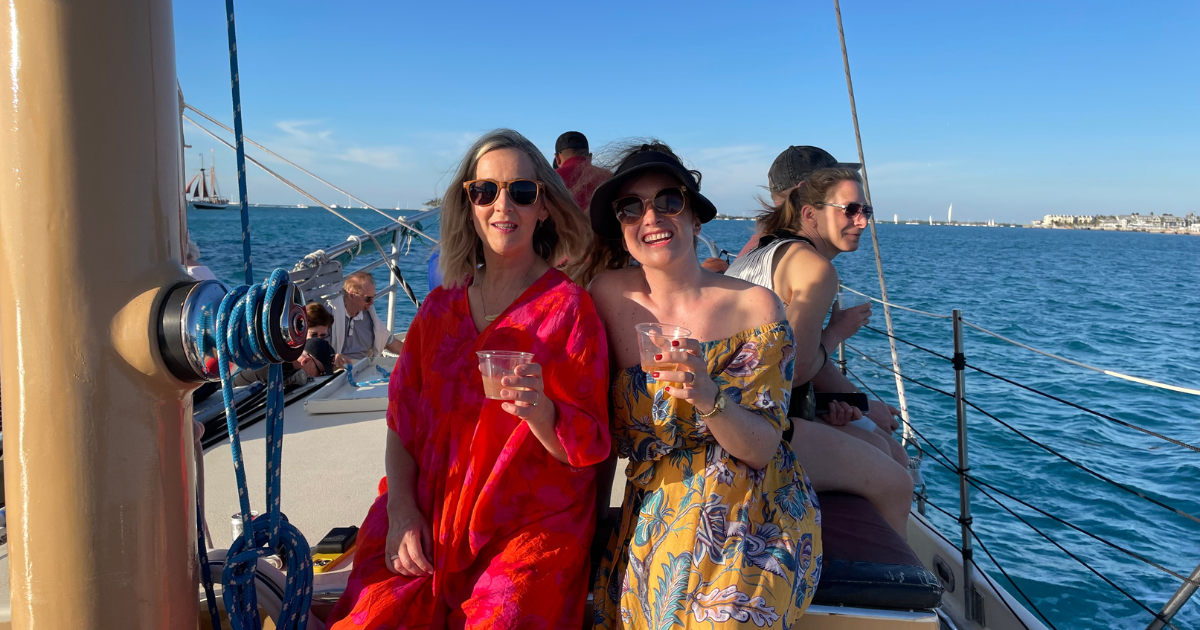
What to do on your holidays in the Florida Keys
Sally and I wanted to see as much of the Keys as we could so we stayed in a few different places during our trip. We flew into Miami International, then drove an hour and a half south to our first stop, Baker’s Cay Resort in Key Largo, to break up the four to five-hour drive down to Key West. There’s also an airport at Key West if you wanted to get a connecting flight straight there instead.
Based at Baker’s Cay it was easy for us to visit Islamorada for snorkelling and boat tours and to enjoy the beaches of Key Largo too, before driving down to Key West. We stopped at the Turtle Hospital in Marathon on the way, then spent a few days living it up in Key West, before making our way back up the Keys and staying at Isla Bella Beach Resort on Knights Key at the edge of Marathon. A relaxing spot, it’s also next to the historic Pigeon Key, which is worth a visit to learn more about how this unique, fragile and beautiful stretch of land – that never reaches more than 18ft (5.5m) above sea level – came to be the holiday hotspot it is today.
Sally’s written a blog about all the activities and excursions we went on during our trip, and I’ve written a blog about visiting Key West. Sally has also written a piece on the importance of conservation in the Florida Keys, and we’ve both written a couple of hotel reviews. All the links to these are at the bottom of this piece, as well as a link to a package from our booking partner Charitable Travel, that includes flights, car hire and accommodation at all the hotels we stayed at.



Eating and drinking in the Florida Keys
Aside from all the brilliant activities, excursions and lounging around on cute beaches, one of the best parts of spending time in the Florida Keys is all the delicious food and drink. As you’d expect from a place that’s surrounded by so much ocean, the fresh fish and shellfish is world-class, and I was really impressed with the standard.
Before diving into the food though, Sally’s a vegan so approached each menu with a different perspective to me. She ate a lot of salads (the options at Bistro 245 in Key West were particularly stand out) and a lot of bowls of chips – but said that’s fairly standard when she’s on holiday and feels pretty spoilt eating out in the UK.
One place that deserves particular mention is Date & Thyme in Key West, for the 'best vegan burger she’s had'.
We also picked up plenty of healthy snacks from Publix supermarket – there are three in the Keys, one in Islamorada, one in Marathon and one in Key West.
Key Lime Pie is a must to try – made with tart key limes – and you’ll see it on nearly every menu throughout the Keys. Many of the menus, especially in Key West, have a Cuban influence, and everywhere you’ll see Key West pink shrimp (sweeter than other types), yellowtail snapper and lion fish – which are an invasive species in the Keys, so everyone’s encouraged to eat as much of them as possible. Also encouraged and popular are stone crab claws, as once a claw is removed and they’re returned to the sea, they’re able to regenerate new ones.
Also popular are conch fritters – or conch anything really. Conch – pronounced konk in the Keys – is a sea snail found throughout the Keys, and the distinctive shell has become a symbol of the string of islands. Key West even tongue-in-cheek declared itself in 1982 the Conch Republic, a micronation independent of the United States of America.
Where to eat? Our favourite spot in the north of the Keys is the Hungry Tarpon Restaurant at Robbie’s Marina on Islamorada. A waterfront shack that’s evolved and grown over time, it’s walls are covered with dollar bills that customers have tacked on and trees grow through the decking. Its signature drink is the loaded Trailer Trash Bloody Mary, garnished with streaky bacon, a pink shrimp, blue-cheese stuffed olives, gherkins, lime, celery and a meat straw. Definitely not vegan-friendly! Nor were the pan-seared black mussels or the seared crab cake sandwich, but they were really, really good.
In Key West, dinner at La Te Da – ideally with a pool-front table in the palm tree-filled courtyard at the adult-only boutique hotel – is a must. The menu is full of fresh seafood, classic cuts of meat and homemade pasta given a local twist, and a great cocktail list. After dinner, head up to La Te Da’s theatre for a fabulous cabaret from Randy Roberts – more on that in our Key West feature (linked below).
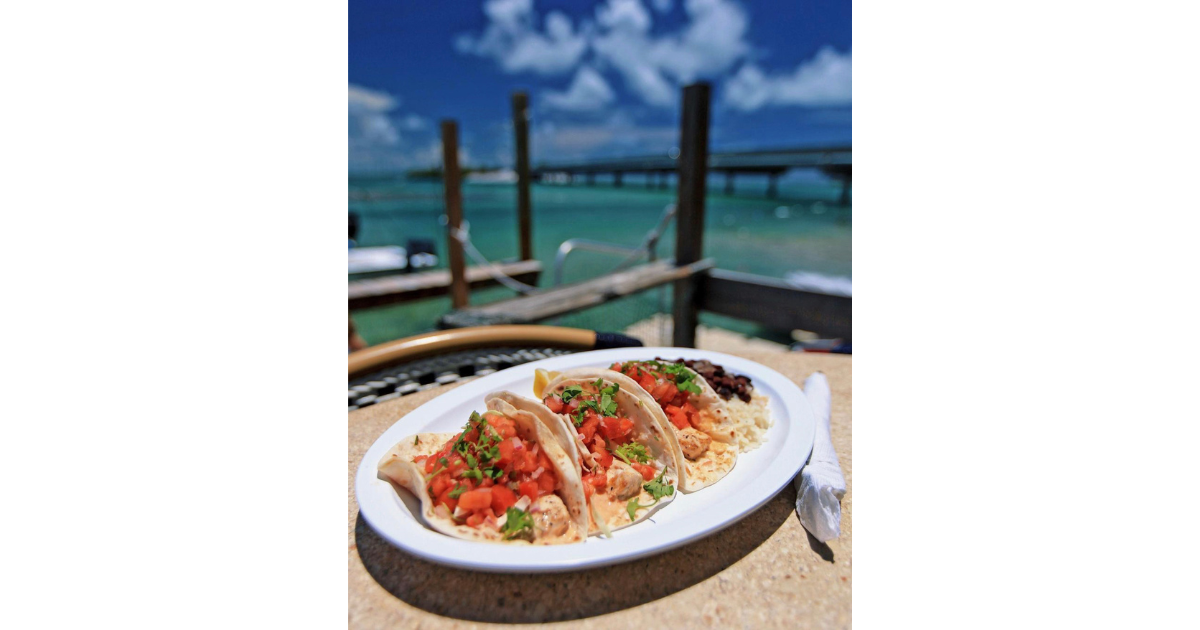

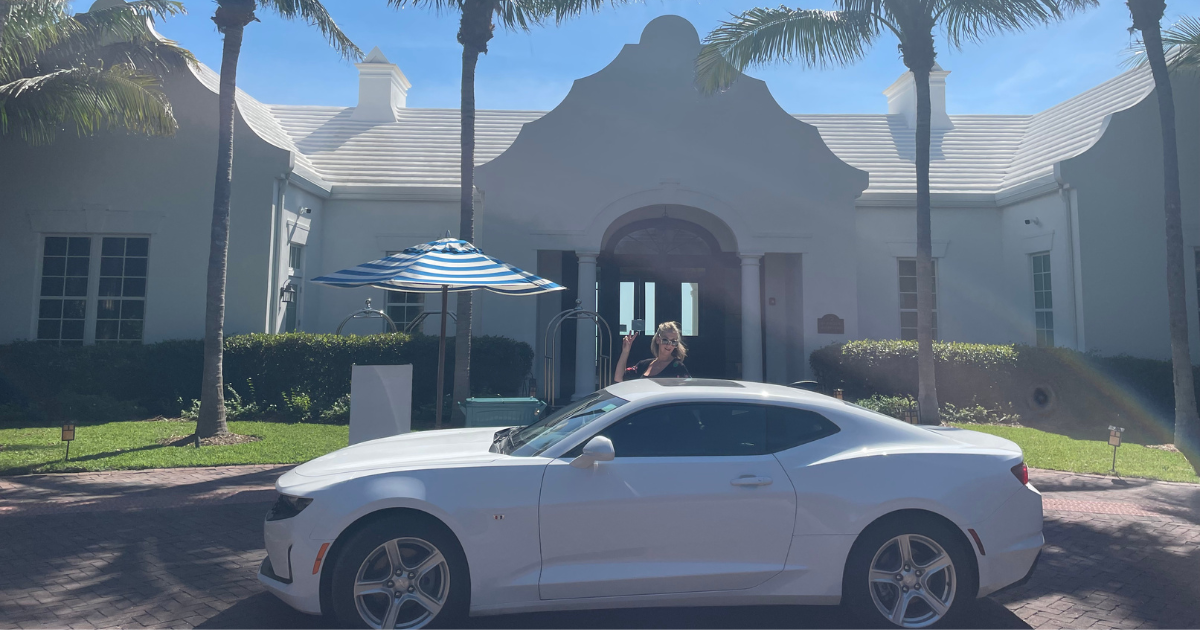
What about the wildlife in the Florida Keys?
Both on land and in the water, the Florida Keys are full of wildlife, and plenty of opportunities to see these animals in their natural habitats. In the water, you can expect to see dolphins, lobsters, crabs (spider and hermit) and manatees – Sally and I spotted a beautiful mother and baby among the mangroves at Islamorada and even turtles. We were over the moon when one appeared when we were snorkelling at Cheeca Rocks reef, and stuck around long enough for us to swim alongside it for a while.
Out on the reefs and around the sponge gardens you'll spot lots and lots of fish! Expect to see such tropical fish as yellowtail snapper, damselfish, parrotfish, grouper and angelfish. Also in abundance are bigger mahi mahi, tarpon, barracuda and tuna. Lionfish are everywhere, but they're an invasive species and fishing them is actively encouraged.
We loved spotting huge pelicans but the hour or so before sunset is the best time to see all the birds. Egrets (great and snowy), great blue herons, American white ibis and ospreys and frigates all come into roost and there's something really relaxing about watching them swoop around the trees.
Lastly, on land are lots of Key deer – a small, endangered deer found only in the Keys. You’ll also see lots of iguanas – but they’re not native to the Keys and are considered a pest.
Practicalities
Here are a few things to consider when you’re on holiday in the Florida Keys:
- The official Atlantic hurricane season runs from 1 June to 30 November, but peak hurricane season is mid-August to mid-October, so consider when to visit. From November through to February, temperatures are still much warmer than across the rest of the States, then the heat arrives properly in March through to May and into summer.
- You’ll need to hire a car. Many, many, MANY years ago there was a train track through to Key West, but it was destroyed in a hurricane and has never been replaced.
- If you’re planning a dive or fishing trip within the Florida Keys National Marine Sanctuary, please use a Blue Star Operator. These are companies that committed to coral conservation, and we’ve included a link to a list of them below.
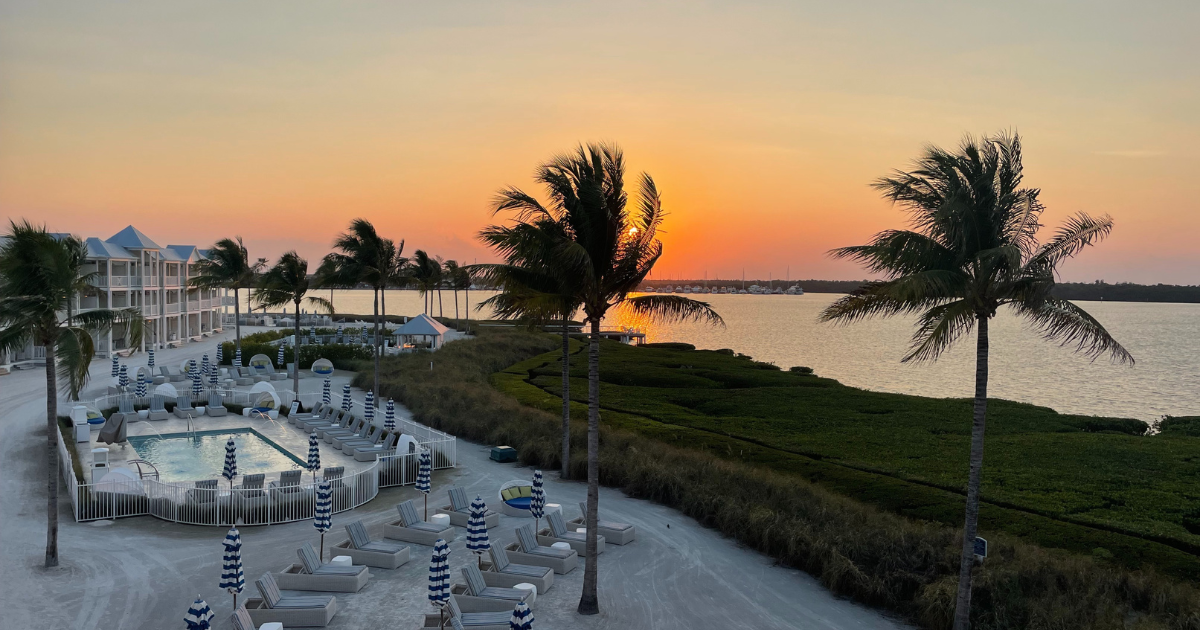




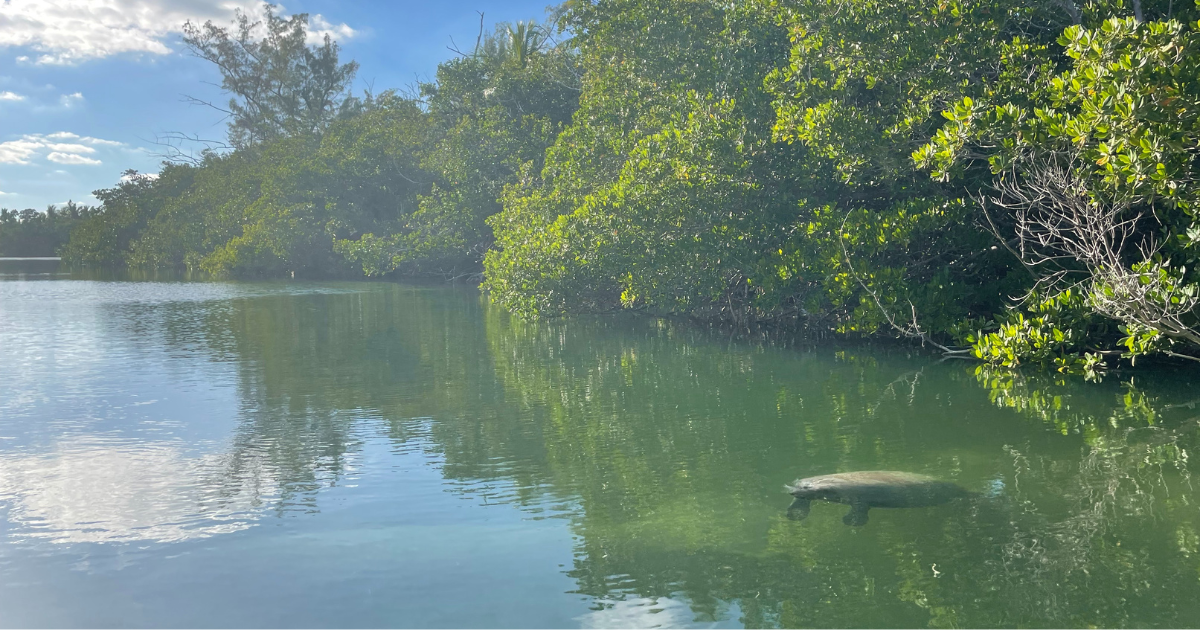
THE DETAILS
Book your holiday to the Florida Keys with our preferred travel agent - Charitable Travel
Charitable Travel have prepared an itinerary in the Florida Keys that includes a donation to your favourite charity. Make your holiday a force for good at no cost to you.
Read more of my blogs and articles
CLICK HERE

